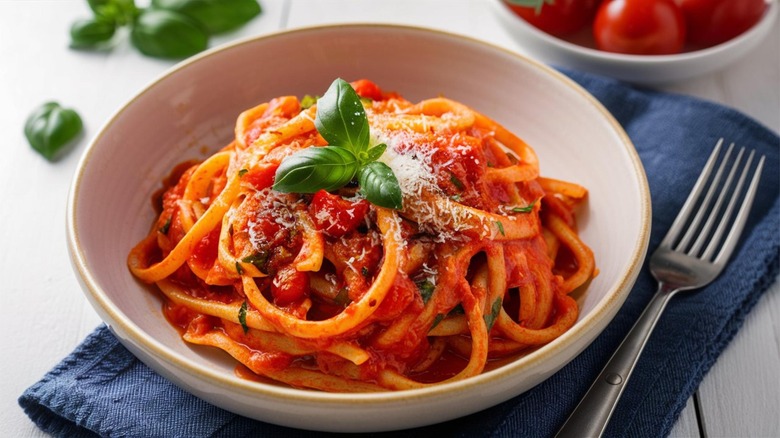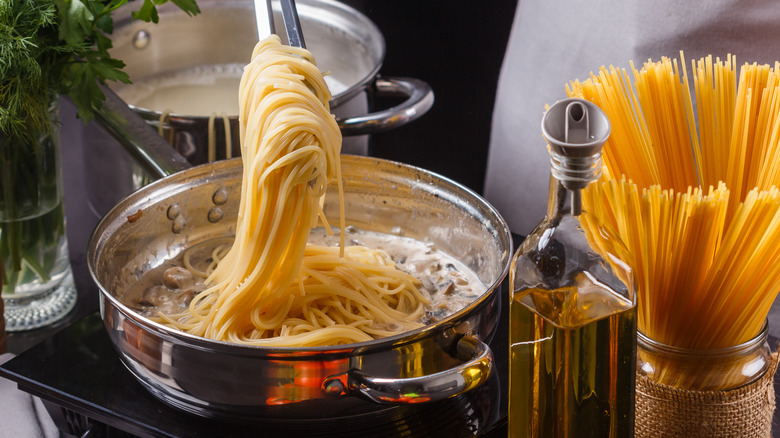What To Know Before Substituting Gluten-Free Pasta In A Recipe
The gluten-free food market continues to grow robustly, and new products seem to appear on supermarket shelves with each swivel of the cart. A particularly dense cluster is in the pasta aisle as celiac disease sufferers and gluten avoiders seek a legit substitute for the wheat pasta they can no longer stomach. Fortunately, dozens of types of gluten-free pasta — made from corn, millet, rice, cauliflower, lentils, buckwheat, quinoa, and amaranth — are now available. Debates on which is the best type and brand rage on social media, but some negative experiences with gluten-free pasta may have more to do with method than product. That's because you can't just substitute gluten-free pasta for conventional wheat-based pasta and expect the same result.
Because the primary ingredients are different, gluten-free and gluten-full pastas don't cook the same. Firstly, gluten-free varieties tend to contain more starch than wheat, which can turn them into sticky clumps in the pot. Gluten-free pasta also takes greater precision of timing, as they can take longer to cook than wheat but quickly turn mushy if overdone. The difference is also clear after boiling and draining, as gluten-free pasta dries faster than wheat, which makes it important to either dampen or mix with the sauce immediately. Lastly, gluten-free pastas come with their own flavors thanks to the wider variety of grains inside. So, any substitution using gluten-free pasta will change the taste.
Tips to improve the substitution
While substituting gluten-free pasta for conventional wheat pasta can present challenges, they can generally be overcome. To lessen the gluey proclivities, it's essential to manage starch in gluten-free pasta. Many cooks suggest rinsing the pasta before cooking to remove some. Using a large enough pot to give the pasta room to cook helps keep noodles separate, as do a rolling boil, dashes of salt, and regular stirring. Adding a few tablespoons of the starchy water to any sauce also stops the pasta from drying out fast. Blending the sauce and pasta in the pot ensures the absorption will happen more evenly, too. Just remember this may cook it more, so consider adding the pasta when it's slightly undercooked to avoid the potential mush.
Finding the best substitution also means choosing a flavor profile that fits personal preferences, as all types of gluten-free flours can change it. Brown rice can impart a grainy flavor and texture. Quinoa can add a nutty flavor and make the pasta thicker. With corn, the pasta might taste slightly sweet. Chickpea lentil, and beans tend to come through stronger. There are gluten-free pastas can achieve a wheat-like flavor and texture according to some cooks, such as Barilla Gluten-Free Penne Pasta, made with a blend of rice and corn flours. Don't forget those flavors will meet your sauce, too, making complementing flavors a strong consideration to ensure the flavor in the pasta fits the flavor of the sauce.

